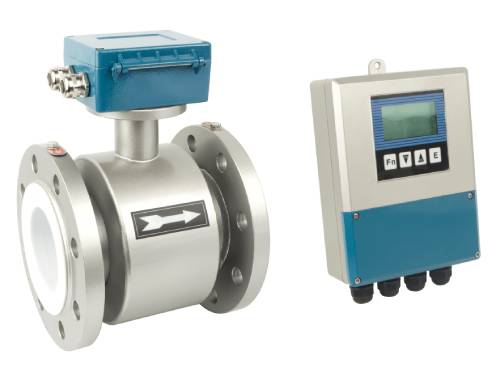After being in use for a period of time, electromagnetic flowmeters may suddenly become inaccurate, which undoubtedly causes significant inconvenience to industrial production.
This article will explore the reasons why electromagnetic flowmeters become inaccurate after some time and offer solutions to these problems.

First, let’s analyze the possible causes:
Sensor Contamination: During operation, the sensor of the electromagnetic flowmeter can become contaminated by substances such as silt, oil, and other impurities. These contaminants can affect the sensor’s signal output, leading to inaccurate measurements. This is particularly true when dealing with corrosive fluids like acids or alkalis, as corrosive substances can adhere to the sensor and cause it to malfunction.
Changes in Fluid Properties: The measurement accuracy of electromagnetic flowmeters is influenced by the physical properties of the fluid, such as changes in density, viscosity, and conductivity, which can impact the sensor’s signal output and affect measurement results. This is especially common in systems with significant fluctuations, such as wastewater treatment and chemical production, where changes in fluid properties can cause the electromagnetic flowmeter to fail.
Pipeline Vibration: During operation, the electromagnetic flowmeter may be affected by pipeline vibrations. These vibrations can interfere with the sensor’s signal output characteristics, thus affecting measurement results. This is particularly an issue in high-flow-rate and high-pressure pipeline systems, where pipeline vibrations can lead to flowmeter malfunction.
Zero Drift: Electromagnetic flowmeters may experience zero drift during use, where the measurement result deviates from zero and gradually increases or decreases over time. Zero drift may be caused by sensor aging, environmental temperature changes, and other factors.

To address these issues, we offer the following solutions:
Regular Cleaning of the Sensor: To prevent sensor contamination, it is recommended to clean the sensor regularly. In systems with corrosive fluids, it’s essential to check the sensor for corrosion and perform timely cleaning and maintenance. When cleaning the sensor, soft cloths should be used to wipe the sensor surface. Rough materials or sharp tools like scrapers should be avoided to prevent damage to the sensor surface.
Install Straight Pipe Sections: To minimize the impact of fluid property changes on measurement accuracy, straight pipe sections can be installed upstream and downstream of the electromagnetic flowmeter. These sections help stabilize fluid properties, thus improving measurement accuracy. When installing straight pipe sections, attention should be paid to the length and diameter to ensure they match the electromagnetic flowmeter.
Install Vibration Dampers: To reduce the impact of pipeline vibrations on measurement results, vibration dampers can be installed upstream and downstream of the electromagnetic flowmeter. These dampers absorb the energy generated by pipeline vibrations, thereby minimizing their effect on the sensor. When selecting a damper, factors such as type, size, and installation position should be considered to ensure it effectively absorbs pipeline vibrations.
Regular Calibration of Zero Point: To prevent zero drift from affecting measurement results, regular zero-point calibration is recommended. Zero-point calibration can be done using standard liquid levels or standard pressure. When choosing a standard liquid level or pressure, accuracy and stability should be considered to ensure calibration results are reliable. Additionally, advanced signal processing techniques can be used to reduce the effect of zero drift on measurement results. For example, digital signal processing techniques can be used to filter and correct signals, thereby improving measurement accuracy.
